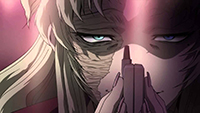
Homrai's temple is by no means the biggest or the most extravagant temple in the world but, to the people in the small town of Homrai and the small settlements surrounding it, it is their pride and joy. The temple is the center of every celebration and festival. The citizens, also go to it daily with prayers and offerings of wine, cheese, or their best crops or trade goods for the gods. On the fifteenth day of every month, the people gather in the temple for their most important practice, their monthly sacrifice of blood to the gods wherein they kill a person who has previously volunteered or been volunteered by the head priest or priestess to be sacrificed. The massive stone altar the priest preaches from is stained crimson from the blood of the numerous human sacrifices throughout the years.
The temple was built for and is used for daily worship by the citizens of Homrai where they bring offerings to their Gods in the hopes of pleasing them. On the fifteenth of every month, the temple is used for the most significant offering the people could give; an offering of blood and human life.
When not used for their bloody rituals, the people of Homrai will have festivals and feasts where food and drink are served, and music is played by musicians in and in the immediate area around the temple.
In times of crisis and bad weather, the temple with its sturdy stone walls acts as a refuge for the people of the town.
In 264 B.R.C a stone alter that was three feet tall, six feet long and three feet wide, was placed in the central area where the head priest or priestess would give sermons and preach. This altar would forever after be used in the monthly human sacrifice rituals.
The temple is the only building in the town made out of sandstone as the rock due to the high cost of importing the stone from other cities. This sandstone was used to build the walls and floors of the building, with the floors polished and smoothed until it looked like it was covered in a layer of glass or ice. The temple's ceilings are vaulted with wooden support beams holding it up. The roof is made from lead to keep wind and water out and the lead is covered by bright red clay tiles. The windows are slim with some being arched while most are flat and all are made from stained glass. There is also a stone cellar/wine cellar located underneath the temple that is used for storage.
The temple was built in 452 B.R.C. by Chand Ayyar after the The Bloody Scourge claimed the lives of a number of citizens, including the founder Priyanshi Ayyar's grandsons, Dhani and Raghu.
Alternative Names
The Temple, Temple of Sacrifice, Blood Temple, Temple of Death, Home of the Gods
Type
Temple / Church
Parent Location
Owning Organization
Cover image:
Mansion in the Forest
by
Nele Diel
Comments
Please Login in order to comment!




Wow wow wow this is brutal! I like your dark sense of humor. Question: How big is the village (and surrounding settlements)? I ask because monthly rituals would probably decimate the population quiet a bit, and you would have to have many people for a "village". Consider the following numbers: In a modern German town of ~50'000 inhabitants, there are about 300-400 children born every year. But a medieval village didn't have 50'000 inhabitants; in fact, that would be a metropolis back then. So, how big is your "village"?
The village has a population of about 5000 because it absorbed a number of hamlets and towns as it grew. The settlements that are still separate range from 500-2000 and sometimes these settlements will offer up criminals as sacrifices.
I see. Dumping criminals is a great use for this. Aren't criminals worth less than innocents in the sacrifice? Or doesn't that matter?
Not really, it's an offering of blood and it keeps them from killing someone they need or like in the village.